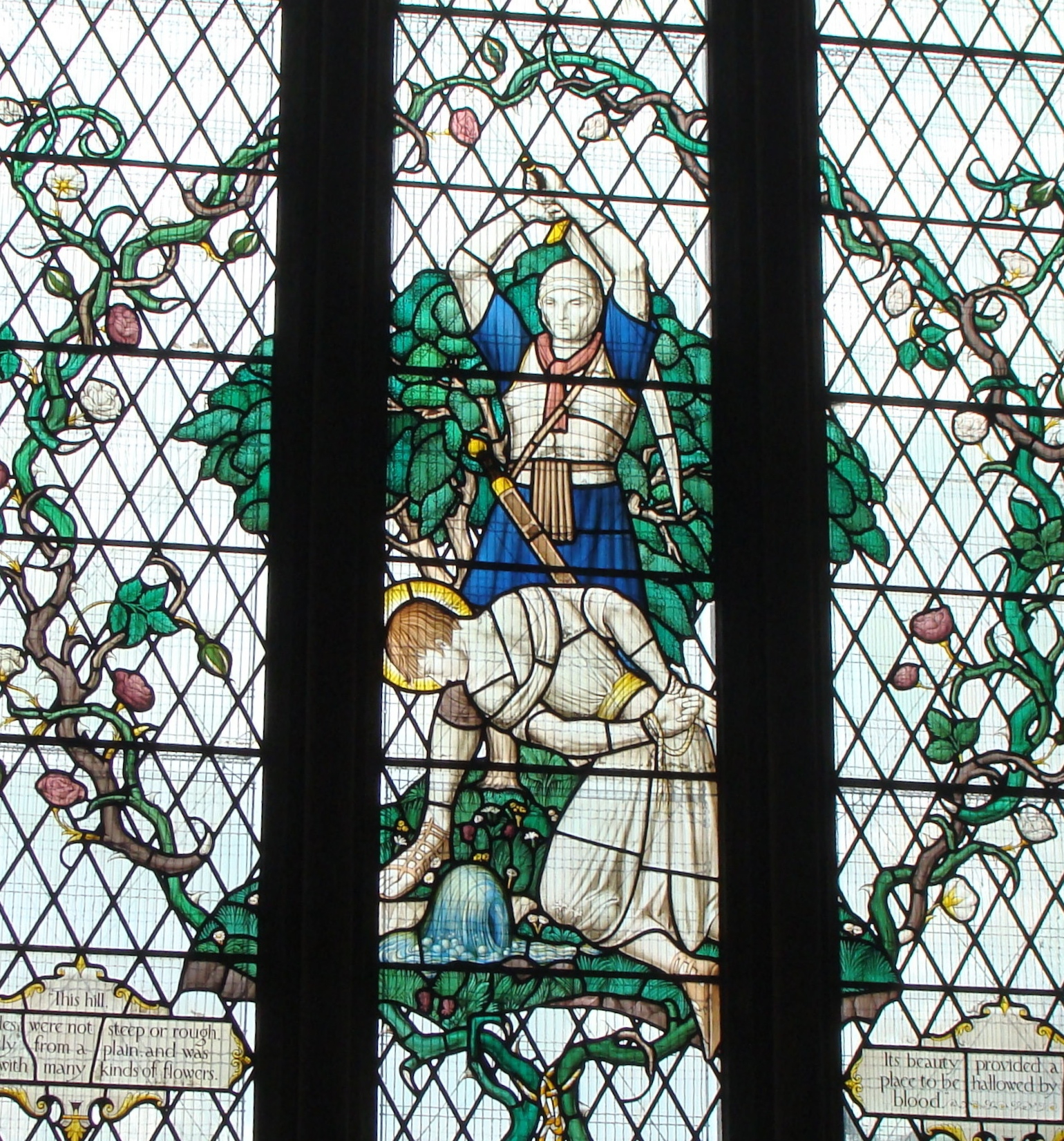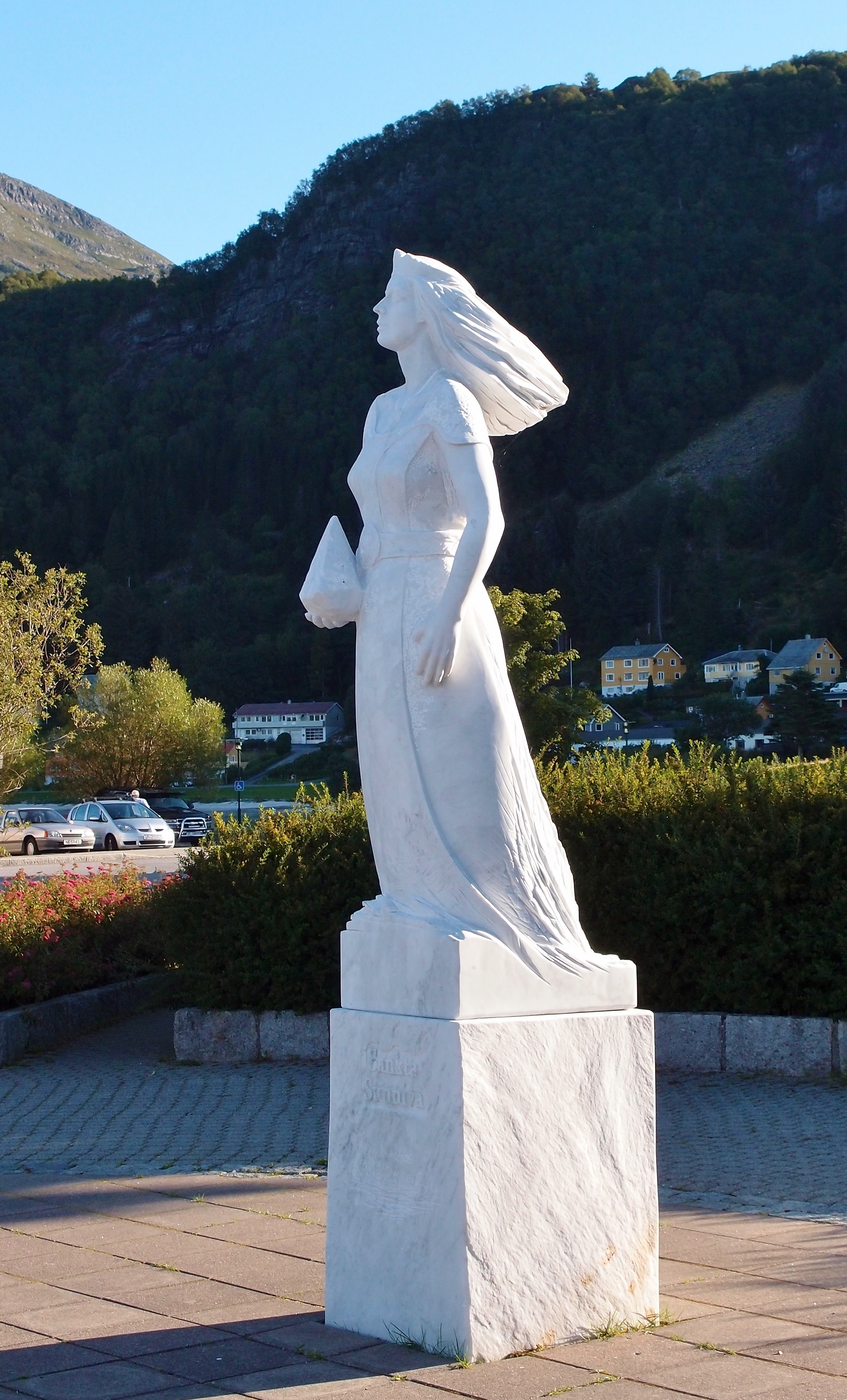|
Albani þáttr Ok Sunnifu
''Albani þáttr ok Sunnifu'', also known as ''Seljumanna þáttr'', is a short tale ( þáttr) about the Irish princess Sunniva who, not wishing to marry a heathen king, flees to the Norwegian island of Selje with her brother Albanus and a number of followers. The residents of the island suspect Sunniva and her companions of killing their livestock and ask Jarl Hákon to kill these ‘bandits’. On seeing Jarl Hákon and his men approach, Sunniva and her companions retreat to their caves and pray that God will not allow them to be killed by the evil men. In answer to their prayers, the caves collapse on the group. Their bodies stay buried until discovered by Olaf Tryggvason, who has them exhumed and has a church built in dedication to them. Together with '' Sörla þáttr'', '' Tóka þáttr Tókasonar,'' '' Norna-gests þáttr '' and '' Þorsteins þáttr uxafóts'', the tale is part of a subgenre of "pagan-contact þættir". The tale is recorded in Oddr Snorrason’s ''Óláf ... [...More Info...] [...Related Items...] OR: [Wikipedia] [Google] [Baidu] |
þáttr
The ''þættir'' (Old Norse singular ''þáttr'', literally meaning a "strand" of rope or yarn)O'Donoghue (2004:226). are short stories written mostly in Iceland during the 13th and 14th centuries. The majority of ''þættir'' occur in two compendious manuscripts, ''Morkinskinna'' and ''Flateyjarbók'', and within them most are found as digressions within kings' sagas. Sverrir Tómasson regards those in ''Morkinskinna'', at least, as '' exempla'' or illustrations inseparable from the narratives that contain them, filling out the picture of the kings' qualities, good and bad, as well as adding comic relief.Sverrir Tómasson (2006:111-13). Íslendinga þættir The short tales of Icelanders or ''Íslendinga þættir'' focus on Icelanders, often relating the story of their travels abroad to the court of a Norwegian king. List of short tales: * ''Albani þáttr ok Sunnifu'' * '' Arnórs þáttr jarlaskálds'' * '' Auðunar þáttr vestfirzka'' * '' Bergbúa þáttr'' * '' Bolla þát ... [...More Info...] [...Related Items...] OR: [Wikipedia] [Google] [Baidu] |
Oddr Snorrason
Oddr Snorrason whose name is also sometimes Anglicized as Odd Snorrason was a 12th-century Icelandic Benedictine monk at the Þingeyraklaustur monastery (''Þingeyrarklaustur''). The monastery was founded in 1133 and was the first in Iceland. Work One latin version of the '' Óláfs saga Tryggvasonar'' is attributed to Oddr - the original work has been almost completely lost but a translation into Old Norse is preserved in two nearly complete versions and a fragment of a third. Oddr made use of previous written works including those of Sæmundr fróði and Ari Þorgilsson as well as ''Acta sanctorum in Selio'' and possibly '' Historia de Antiquitate Regum Norwagiensium''. In turn Snorri Sturluson made use of Oddr's work when writing the ''Heimskringla'', as did the author of ''Óláfs saga Tryggvasonar en mesta ''Óláfs saga Tryggvasonar en mesta'' or ''The Greatest Saga of Óláfr Tryggvason'' is generically a hybrid of different types of sagas and compiled from various sources ... [...More Info...] [...Related Items...] OR: [Wikipedia] [Google] [Baidu] |
Flateyjarbók
''Flateyjarbók'' (; "Book of Flatey") is an important medieval Icelandic manuscript. It is also known as GkS 1005 fol. and by the Latin name ''Codex Flateyensis''. It was commissioned by Jón Hákonarson and produced by the priests and scribes Jón Þórðarson and Magnús Þórhallsson. Description ''Flateyjarbók'' is the largest medieval Icelandic manuscript, comprising 225 written and illustrated vellum leaves. It contains mostly sagas of the Norse kings as found in the '' Heimskringla'', specifically the sagas about Olaf Tryggvason, St. Olaf, Sverre, Hákon the Old, Magnus the Good, and Harald Hardrada. But they appear here expanded with additional material not found elsewhere (some of it being very old) along with other unique differences. Most—but not all—of the additional material is placed within the royal sagas, sometimes interlaced. Additionally, the manuscript contains the only copy of the eddic poem ''Hyndluljóð'', a unique set of annals from creation t ... [...More Info...] [...Related Items...] OR: [Wikipedia] [Google] [Baidu] |
Selje Abbey
Selja Abbey (''Selja kloster'') was a Benedictine monastery located on the island of Selja in the municipality of Stad, Vestland, Norway. The island of Selja, which has been formerly known as Sellø or Selø, is located 15 minutes by boat from Selje's mainland. History The monastery was founded in about 1100. The construction of the benedictine monastery is seen in the context of the legend of Saint Sunniva, the patron saint of the Norwegian Ancient Diocese of Bergen. Known as Sunniva of Selja (''Sunniva av Selja''), according to legend Sunniva was the heir of an Irish kingdom who had to flee from a heathen king. She fled to island of Selja where she died. At the time of the abbey's foundation, the island of Selje was an important Christian site. It was the location of the original shrine of Saint Sunniva and for that reason was a place of pilgrimage, and also the seat of a bishopric and a cathedral dedicated to Saint Michael, established about 1070. The bishop was inst ... [...More Info...] [...Related Items...] OR: [Wikipedia] [Google] [Baidu] |
Saint Alban
Saint Alban (; la, Albanus) is venerated as the first-recorded British Christian martyr, for which reason he is considered to be the British protomartyr. Along with fellow Saints Julius and Aaron, Alban is one of three named martyrs recorded at an early date from Roman Britain ("Amphibalus" was the name given much later to the priest he was said to have been protecting). He is traditionally believed to have been beheaded in Verulamium (modern St Albans) sometime during the 3rd or 4th century, and his cult has been celebrated there since ancient times. Hagiography Alban lived in Roman Britain, but little is known about his religious affiliations, socioeconomic status, or citizenship. According to the most elaborate version of the tale found in Bede's '' Ecclesiastical History of the English People'', in the 3rd or 4th century (see dating controversy below), Christians began to suffer "cruel persecution", and Alban was living in Verulamium. However, Gildas says he ... [...More Info...] [...Related Items...] OR: [Wikipedia] [Google] [Baidu] |
Acta Sanctorum In Selio
Saint Sunniva (10th century; Old Norse ''Sunnifa'', from Old English ''Sunngifu'') is the patron saint of the Norwegian Church of Norway Diocese of Bjørgvin, as well as all of Western Norway. Sunniva was venerated alongside her brother Alban, who in Norwegian tradition was identified with Saint Alban, the Roman-era British saint. Legend ''Acta sanctorum in Selio'' is a Latin hagiography of saints Alban and Sunniva and their companions. It is believed to have been composed shortly after 1170. Oddr Snorrason made use of it in his '' Óláfs saga Tryggvasonar'', in a section known as '' Albani þáttr ok Sunnifu'' ("tale of Alban and Sunniva") and also as ''Seljumanna þáttr''. Oddr's original work was composed in Latin but only survives in an Old Icelandic translation. The legend was also included in the later compilation '' Óláfs saga Tryggvasonar en mesta''. The tale is directly based on that in ''Acta sanctorum in Selio'', and thus slightly younger, although likely stil ... [...More Info...] [...Related Items...] OR: [Wikipedia] [Google] [Baidu] |
Old Norse
Old Norse, Old Nordic, or Old Scandinavian, is a stage of development of North Germanic dialects before their final divergence into separate Nordic languages. Old Norse was spoken by inhabitants of Scandinavia and their overseas settlements and chronologically coincides with the Viking Age, the Christianization of Scandinavia and the consolidation of Scandinavian kingdoms from about the 7th to the 15th centuries. The Proto-Norse language developed into Old Norse by the 8th century, and Old Norse began to develop into the modern North Germanic languages in the mid-to-late 14th century, ending the language phase known as Old Norse. These dates, however, are not absolute, since written Old Norse is found well into the 15th century. Old Norse was divided into three dialects: ''Old West Norse'' or ''Old West Nordic'' (often referred to as ''Old Norse''), ''Old East Norse'' or ''Old East Nordic'', and '' Old Gutnish''. Old West Norse and Old East Norse formed a dialect ... [...More Info...] [...Related Items...] OR: [Wikipedia] [Google] [Baidu] |
Óláfs Saga Tryggvasonar En Mesta
''Óláfs saga Tryggvasonar en mesta'' or ''The Greatest Saga of Óláfr Tryggvason'' is generically a hybrid of different types of sagas and compiled from various sources in the fourteenth century, but is most akin to one of the kings' sagas. It is an extended biography of King Óláfr Tryggvason and relates in detail the conversion to Christianity of Óláfr Tryggvason and Hallfreðr vandræðaskáld. Composed around 1300 it takes '' Óláfs saga Tryggvasonar'' in Snorri Sturluson's ''Heimskringla'' as its base but expands the narrative greatly with content from the previous biographies of the king by Oddr Snorrason and Gunnlaugr Leifsson as well as less directly related material. The saga is preserved in a number of manuscripts which can be divided into two groups; an earlier redaction preserved in the manuscripts ''AM 53 fol.'', ''AM 54 fol.'', ''AM 61 fol.'', ''Bergsbók'' and ''Húsafellsbók''. The second group is a later redaction preserved in ''AM 62 fol.'' and ''Flatey ... [...More Info...] [...Related Items...] OR: [Wikipedia] [Google] [Baidu] |
Sunniva
Saint Sunniva (10th century; Old Norse ''Sunnifa'', from Old English ''Sunngifu'') is the patron saint of the Norwegian Church of Norway Diocese of Bjørgvin, as well as all of Western Norway. Sunniva was venerated alongside her brother Alban, who in Norwegian tradition was identified with Saint Alban, the Roman-era British saint. Legend ''Acta sanctorum in Selio'' is a Latin hagiography of saints Alban and Sunniva and their companions. It is believed to have been composed shortly after 1170. Oddr Snorrason made use of it in his ''Óláfs saga Tryggvasonar'', in a section known as ''Albani þáttr ok Sunnifu'' ("tale of Alban and Sunniva") and also as ''Seljumanna þáttr''. Oddr's original work was composed in Latin but only survives in an Old Icelandic translation. The legend was also included in the later compilation ''Óláfs saga Tryggvasonar en mesta''. The tale is directly based on that in ''Acta sanctorum in Selio'', and thus slightly younger, although likely still b ... [...More Info...] [...Related Items...] OR: [Wikipedia] [Google] [Baidu] |
Norna-Gests þáttr
''Nornagests þáttr'' or the ''Story of Norna-Gest'' is a legendary saga about the Norse hero Nornagestr, sometimes called Gestr, and here anglicized as Norna-Gest. Summary Norna-Gest was the son of a Danish man named Thord Thingbiter, who once dwelt on the estate of Grøning in Denmark. When he was born, three Norns arrived and foretold the child's destiny. Two of them gave him good gifts. However Skuld, the youngest of the Norns, deeming that the two others made rather light of her, determined to render void their promises of good fortune for the child. So she prophesied that his life was to last no longer than that of a candle standing lit beside the cradle. The eldest Norn (Urðr) instantly extinguished the flame and asked his mother to hide it well. When Norna-Gest had grown up he became the care-taker of the candle and he is said to have lived for 300 years. He took part in the battles of Sigurd the Völsung, spent time with Ragnar Lodbrok's son Björn Ironside and his ... [...More Info...] [...Related Items...] OR: [Wikipedia] [Google] [Baidu] |
Tóka þáttr Tókasonar
''Tóka þáttr Tókasonar'' is a short legendary saga found in the ''Flateyjarbók ''Flateyjarbók'' (; "Book of Flatey") is an important medieval Icelandic manuscript. It is also known as GkS 1005 fol. and by the Latin name ''Codex Flateyensis''. It was commissioned by Jón Hákonarson and produced by the priests and scribes ...''. Sources and external links''Cultural Paternity in the Flateyjarbók Óláfs saga Tryggvasonar'', by Elizabeth Ashman Rowe. [...More Info...] [...Related Items...] OR: [Wikipedia] [Google] [Baidu] |





_by_Johannes_Gehrts.jpg)